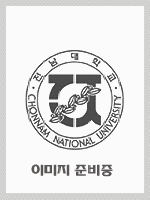상세정보
부가기능
Argument-driven inquiry in physical science [electronic resource] lab investigations for grades 6-8
상세 프로파일
| 자료유형 | e-Book |
|---|---|
| 서명/저자사항 | Argument-driven inquiry in physical science [electronic resource]: lab investigations for grades 6-8 / Jonathon Grooms, Patrick J. Enderle, Todd Hutner, Ashley Murphy, and Victor Sampson. |
| 개인저자 | Grooms, Jonathon, 1981- author. Enderle, Patrick, author. Hutner, Todd, 1981- author. Murphy, Ashley, 1988- author. Sampson, Victor, 1974- author. |
| 단체저자명 | National Science Teachers Association. |
| 발행사항 | Arlington, VA : National Science Teachers Association, [2016]. |
| 발행예정일자 | 1609 |
| 형태사항 | 1 online resource. |
| 기타형태 저록 | Print version: Grooms, Jonathon, 1981- Argument-driven inquiry in physical science. Arlington, VA : National Science Teachers Association, [2016] 9781938946233 |
| ISBN | 9781681403724 1681403722 |
| 서지주기 | Includes bibliographical references and index. |
| 내용주기 | Section 1. Using argument-driven inquiry -- 1. Argument-driven inquiry -- 2. Lab investigations -- Section 2. Physical science core idea 1: matter and its interactions -- Lab 1. Thermal energy and matter: what happens at the molecular level when thermal energy is added to a substance? -- Lab 2. Chemical and physical changes: what set of rules should we use to distinguish between chemical and physical changes in matter? -- Lab 3. Physical properties of matter: what are the identities of the unknown substances? -- Lab 4. Conservation of mass: how does the total mass of the substances formed as a result of a chemical change compare with the total mass of the original substances? -- Lab 5. Design challenge: which design will cool a soda the best? -- Section 3. Physical science core idea 2: motion and stability: forces and interactions -- Lab 6. Strength of gravitational force: how does the gravitational force that exists between two objects relate to their masses and the distance between them? -- Lab 7. Mass and free fall: how does mass affect the amount of time it takes for an object to fall to the ground? -- Lab 8. Force and motion: how do changes in pulling force affect the motion of an object? -- Lab 9. Mass and motion: how do changes in the mass of an object affect its motion? -- Lab 10. Magnetic force: how is the strength of an electromagnet affected by the number of coils of wire? -- Lab 11. Design challenge: which electromagnet design is best for picking up 50 paper clips? -- Lab 12. Unbalanced forces: how does surface area influence friction and the motion of an object? -- Section 4: Physical science core idea 3: Energy -- Lab 13. Kinetic energy: how do the mass and velocity of an object affect its kinetic energy? -- Lab 14. Potential energy: how can you make an action figure jump higher? -- Lab 15. Thermal energy and specific heat: which material has the greatest specific heat? -- Lab 16. Electrical energy and lightbulbs: how does the arrangement of lightbulbs that are connected to a battery affect the brightness of a single bulb in that circuit? -- Lab 17. Rate of energy transfer: how does the surface area of a substance affect the rate at which thermal energy is transferred from one substance to another? -- Lab 18. Radiation and energy transfer: what color should we paint a building to reduce cooling costs? -- Section 5: Physical science core idea 4: Waves and their applications in technologies for information transfer -- Lab 19. Wave properties: how do frequency, amplitude, and wavelength of a transverse wave affect its energy? -- Lab 20. Reflection and refraction: how can you predict where a ray of light will go when it comes in contact with different types of transparent materials? -- Lab 21. Light and information transfer: how does the type of material affect the amount of light that is lost when light waves travel down a tube? -- Lab 22. Design challenge: how should eyeglasses be shaped to correct for nearsightedness and farsightedness? |
| 요약 | "Free your students--and yourself--from the same old worksheets and data tables. Argument-Driven Inquiry in Physical Science will make middle school labs much more active and engaging. Its 22 investigations teach students to use argument to construct, support, and evaluate scientific claims of their own and others. The labs cover four core ideas in physical science: matter, motion and forces, energy, and waves. Students dig into important content and discover scientific practices as they figure out everything from how thermal energy works to what could make an action figure jump higher"-- |
| 해제 | Provided by publisher. |
| 일반주제명 | Physical sciences --Methodology --Study and teaching (Middle school) Physical sciences --Experiments. Inquiry-based learning. SCIENCE --Essays. SCIENCE --Reference. |
| 분류기호(DDC) | 500.20712 |
| 언어 | 영어 |
| 바로가기 |  |
소장정보
- 소장정보
![]() 보존/밀집/기증 자료 신청
보존/밀집/기증 자료 신청
![]() 분관대출
분관대출
![]() 서가부재도서
서가부재도서
![]() 소장위치출력
소장위치출력
| No. | 등록번호 | 청구기호 | 소장처 | 밀집번호 | 도서상태 | 반납예정일 | 예약 | 서비스 | 매체정보 |
|---|---|---|---|---|---|---|---|---|---|
| 1 | E1609 | EB 500.20712 | 중앙도서관[본관]/E-Book/ | 대출가능 |
태그
- 태그












































